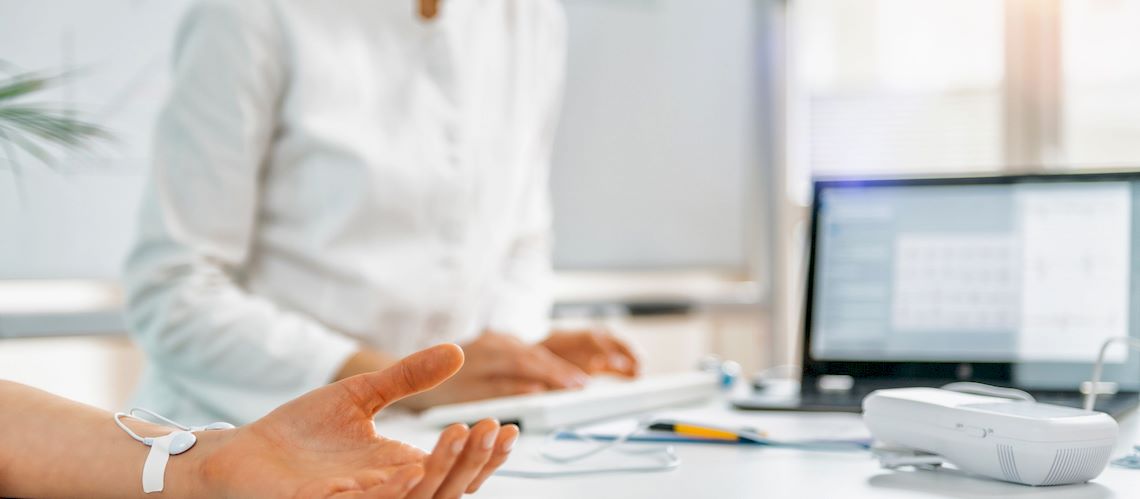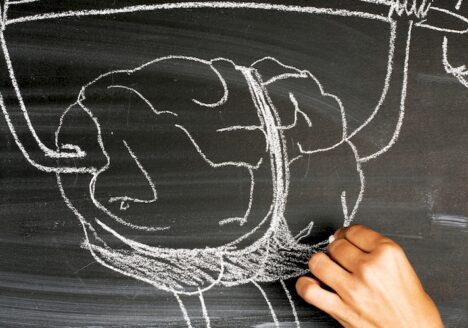Biofeedback is a therapeutic technique that enables individuals to gain conscious control over physiological processes such as heart rate, muscle tension, and blood pressure using sensors and electronic monitoring devices. Through real-time feedback, individuals can learn to regulate typically involuntary functions, promoting improved physical and mental well-being. A particularly well-studied form of biofeedback is Heart Rate Variability (HRV) biofeedback, which helps individuals enhance the balance between the sympathetic and parasympathetic nervous systems, leading to better autonomic regulation. Research has demonstrated biofeedback’s effectiveness in reducing stress, anxiety, and chronic pain, as well as in managing specific conditions such as hypertension and fibromyalgia (Hassett et al., 2007; Lehrer et al., 2020). By empowering individuals to actively influence their physiological states, biofeedback offers a powerful tool for improving overall health.
Definition:
Biofeedback involves the use of electronic monitoring devices that provide real-time information about physiological processes. The feedback allows individuals to consciously regulate these functions, leading to improved health outcomes. Common biofeedback devices include electromyographs (EMGs) for measuring muscle tension and electroencephalographs (EEGs) for tracking brainwave activity. Studies have shown that biofeedback is effective in managing various conditions, including hypertension and migraines (Lehrer et al., 2020; Schwartz & Andrasik, 2017).
History and Origins:
The concept of biofeedback originated in the early 20th century, with significant developments occurring in the 1960s. Researchers such as Neal Miller and John Basmajian explored the voluntary control of autonomic and muscular functions. Miller demonstrated that autonomic processes like heart rate could be operantly conditioned (Miller, 1969), while Basmajian provided evidence of voluntary control over individual muscle units using EMG biofeedback (Basmajian, 1963). Their findings contributed to the clinical use of biofeedback for therapeutic purposes.
Principles and Concepts:
- Self-Regulation: Biofeedback empowers individuals to regulate physiological processes that are typically automatic, such as heart rate and muscle tension (Schwartz & Andrasik, 2017).
- Awareness and Control: By increasing awareness of physiological functions, individuals can consciously control them, reducing symptoms of stress and promoting overall health (Lehrer et al., 2020).
- Feedback Loop: The core of biofeedback lies in the continuous cycle of monitoring, feedback, and adjustment, which enhances its effectiveness in health improvement (Schwartz & Andrasik, 2017).
Benefits:
Biofeedback offers a range of mental and physical health benefits, including:
- Reduced Stress and Anxiety: Biofeedback helps individuals reduce stress by regulating physiological responses (Schwartz & Andrasik, 2017).
- Improved Chronic Pain Management: Biofeedback has proven particularly effective for conditions such as fibromyalgia and migraines (Hassett et al., 2007; Schwartz & Andrasik, 2017).
- Enhanced Focus and Concentration: Neurofeedback, a form of biofeedback focusing on brainwave regulation, has been shown to improve attention and focus in individuals with ADHD (Sherlin et al., 2011).
- Better Regulation of Blood Pressure: Heart rate variability (HRV) biofeedback is especially beneficial for managing hypertension by improving autonomic regulation (Lehrer et al., 2020).
- Improved Sleep Quality: Studies suggest that biofeedback interventions can improve sleep patterns and overall sleep quality (Moravec & Reardon, 2019).
Applications:
Biofeedback is applied in various clinical and therapeutic settings to address conditions such as:
- Anxiety and Depression: Biofeedback helps manage symptoms of anxiety and depression by improving self-regulation of the autonomic nervous system (Yucha & Montgomery, 2008).
- Chronic Pain Conditions: Biofeedback is effective in managing chronic pain conditions such as fibromyalgia and migraines (Hassett et al., 2007; Schwartz & Andrasik, 2017).
- Athletic Performance: Athletes use biofeedback to enhance performance and recovery by improving their physiological control (Peper et al., 2008).
- Attention Disorders: Neurofeedback has been particularly effective in improving focus and managing symptoms in individuals with ADHD (Sherlin et al., 2011).
- Rehabilitation: Biofeedback is used in rehabilitation settings to aid recovery from injuries and surgeries by improving muscle control and reducing pain (Lehrer et al., 2020).
Scientific Evidence:
Numerous studies have supported the efficacy of biofeedback in various conditions. For example, Lehrer et al. (2020) found that heart rate variability biofeedback significantly improved blood pressure control in hypertensive patients. Similarly, Hassett et al. (2007) reported that biofeedback interventions reduced chronic pain symptoms in patients with fibromyalgia. Moreover, neurofeedback has been shown to be an effective treatment for improving attention and reducing hyperactivity in children with ADHD (Sherlin et al., 2011).
How to Get Started:
- Choose a Biofeedback Device: Select a device based on your specific needs, such as an EMG for muscle tension or an EEG for brainwave activity (Schwartz & Andrasik, 2017).
- Learn the Basics: Understand how to operate the device and interpret the feedback (Schwartz & Andrasik, 2017).
- Practice Regularly: Consistent practice is crucial for mastering control over physiological functions (Lehrer et al., 2020).
- Seek Professional Guidance: Working with a trained biofeedback therapist enhances the effectiveness of the therapy (Yucha & Montgomery, 2008).
Case Studies and Testimonials:
Research and clinical case studies have shown that regular biofeedback practice can lead to significant improvements in both physical and mental health. For instance, patients with fibromyalgia have reported reductions in chronic pain symptoms following biofeedback interventions (Hassett et al., 2007), and individuals with heart failure have experienced improved quality of life through biofeedback-assisted stress management (Moravec & Reardon, 2019).
Conclusion:
Biofeedback is a versatile and effective therapeutic tool that can significantly enhance mental and physical health. By incorporating biofeedback into a regular wellness routine, individuals can gain control over physiological processes, reduce stress, and improve overall well-being. While its benefits are well-documented, access to trained professionals may limit its widespread use, and outcomes can vary depending on individual differences (Yucha & Montgomery, 2008).
References:
Basmajian, J. V. (1963) ‘Control and training of individual motor units’, Science, 141(3579), pp. 440-441.
Hassett, A. L., Radvanski, D. C., Vaschillo, E. G., Buyske, S., Sigal, L. H. and Karavidas, M. K. (2007) ‘A pilot study of the efficacy of heart rate variability (HRV) biofeedback in patients with fibromyalgia’, Applied Psychophysiology and Biofeedback, 32(1), pp. 1-10.
Lehrer, P. M., Vaschillo, E. G. and Vaschillo, B. (2020) ‘Heart rate variability biofeedback: A new tool for improving autonomic regulation’, Applied Psychophysiology and Biofeedback, 45(3), pp. 169-175.
Miller, N. E. (1969) ‘Learning of visceral and glandular responses’, Science, 163(3874), pp. 434-445.
Moravec, C. S. and Reardon, K. (2019) ‘Biofeedback in the treatment of heart failure’, Journal of Cardiovascular Nursing, 34(2), pp. 137-143.
Peper, E., Harvey, R., Mason, L., and Lin, I-M. (2008) ‘Do better in math: How your body posture may change stereotype threat response’, Biofeedback, 36(3), pp. 84-87.
Schwartz, M. S. and Andrasik, F. (2017) Biofeedback: A practitioner’s guide. 4th edn. New York: Guilford Press.
Sherlin, L., Arns, M., Lubar, J. and Sokhadze, E. (2011) ‘A critical review of neurofeedback in ADHD’, Journal of Neurotherapy, 15(4), pp. 361-378.
Yucha, C. and Montgomery, D. (2008) Evidence-based practice in biofeedback and neurofeedback. 2nd edn. Wheaton, IL: AAPB.




